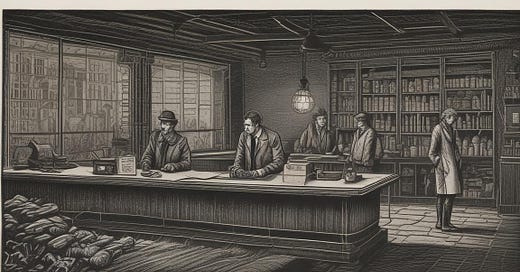TFT: How to Handle Mistakes with Your Customers
Why Owning your Mistakes can strengthen your customer relationship
This may not have happened to you yet, but it will. You’ll deliver the wrong product, be late on a service call, break something on-site, or miss the mark entirely on a project. It happens to everyone in business sooner or later. The key isn’t avoiding mistakes—it's how you react when they happen. How do you communicate with the customer? How do you fix the issue? How do you own it? In this TFT post, we'll explore how to handle mistakes with your customers, and more importantly, how to rebuild trust once it's broken.
Own it Fast
First and foremost, own the mistake quickly. You need to be the first to inform the customer about the issue. While it’s not an easy conversation to have, at least you’ll maintain control over the situation. Customers tend to be less frustrated if you come straight to them and say, "We messed up on X, but we’re already working on a solution. I’ll provide more details as soon as I know them." This not only shows accountability but also allows them to communicate the situation to their own internal team or leadership.
If you're in sales and don’t have firsthand knowledge of what went wrong, that’s fine. Speak with your team on-site or head there yourself. Gather the facts before you approach the customer. Always ensure that your team feels supported; the last thing they need is to feel like they are stranded on an island.
Make it Right
Once you have a plan to correct the mistake, figure out what’s a fair offer to make it right for the customer. Sure, you want to remain profitable, but how you respond now could determine if you’ll get more work from this client down the road. Sometimes, that means crediting part of the original work or offering a discount on future services.
Another idea is to make the process as painless as possible for the customer. For example, can you credit the mistake on the invoice before they even see it? It may seem small, but these gestures of goodwill build customer loyalty. In my experience, when I preemptively adjusted for an error, clients simply said "thank you" and moved on. Waiting for them to request compensation usually led to them asking for more than I would have offered. So, be proactive and honest about what you think is fair.
Rebuild Trust
Now that the mistake is fixed, and you've made it right, the next challenge is to rebuild trust with the customer. Depending on the size of the mistake, this could be a small task or a long journey. A crucial part of this process is demonstrating that you've learned from the error.
Explain the changes you’ve made to your processes to prevent this mistake from happening again. Customers will appreciate that you’ve taken steps to improve. If you go back with the same process and just say, "We hope it’s better this time," you’re not rebuilding trust—you're eroding it. Instead, share the tangible steps you’re taking to improve. Then, go out and make different mistakes in the future. Mistakes are part of growth, and if you're making new ones, it means you’re learning.
Consider Boeing provides a high-profile example of what can happen when mistakes are not handled well. Between the 737 MAX crashes and issues with its space missions, the company has been slow to regain customer trust. While they've admitted some mistakes, a clearer plan for making things right is still needed. You may have a project that feels like Boeing’s situation right now—where if it can go wrong, it will—but follow the steps above and you’ll come out strongeR.
Action Step
Look over your recent projects. Identify at least three mistakes you’ve made and ask yourself:
Have you owned it?
Have you made it right?
Are you rebuilding trust?
If you answer "no" to any of these, set up a plan to fix it.
Recommended Readings
"The Power of Owning your Mistakes"
"Handling Customer Complaints"




